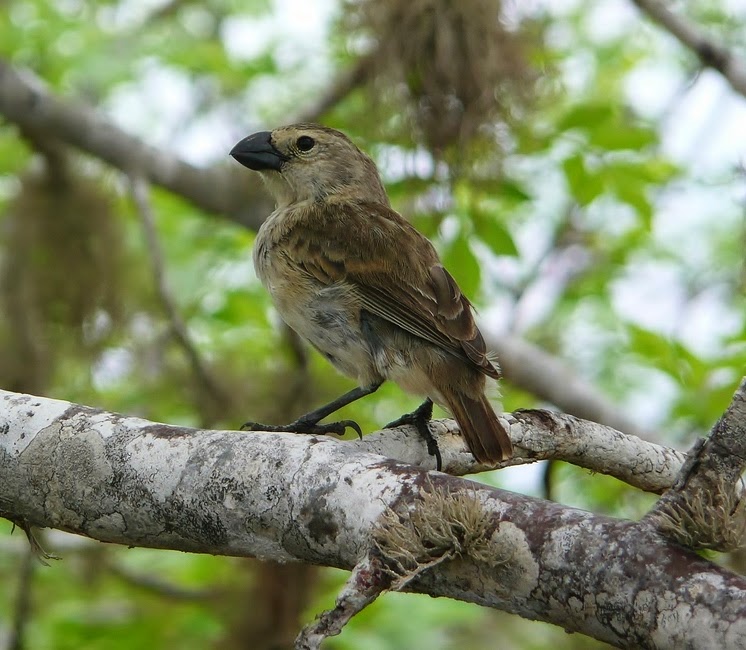 |
| Photo by Ruben Heleno (Charles Darwin Foundation) |
Common name:
large tree-finch (en); tentilhão-de-Darwin-papagaio (pt); géospize psittacin (fr); pinzón de Darwin lorito (es); papageischnabel-Darwinfink (de)
Taxonomy:
Order Passeriformes
Family Emberizidae
Range:
This species is endemic to the Galapagos Islands, being found in Isabela, Santa Cruz, Santa Fé, Fernandina, Santiago, Floreana, Marchena, Pinta and Rábida. It is extinct on Pinzón.
Size:
These birds are13 cm long and weigh 15-21 g.
Habitat:
The large tree-finch is mostly found in moist tropical forests but also uses dry tropical forests and occasionally area dominated by scrubs and Opuntia cacti. They are present at altitudes of 300-700 m.
Diet:
They mainly hunt arthropods but also take fruits, including cactus fruits, flowers and seeds.
Breeding:
Large tree-finches are monogamous and pair for life. They breed during the local wet season, in December-June. The male builds the nest, a small some-shaped structure with a side entrance near the top, made of dry grasses, moss and lichens. the female lays 3-4 whitish eggs with dark spots, which she incubates alone for about 12 days. The chicks are fed by both parents and fledge 13-15 days after hatching.
Conservation:
IUCN status – LC (Least Concern)
This species has a relatively small breeding range and is described as common to uncommon. The population is suspected to be stable in the absence of evidence for any declines or substantial threats.







